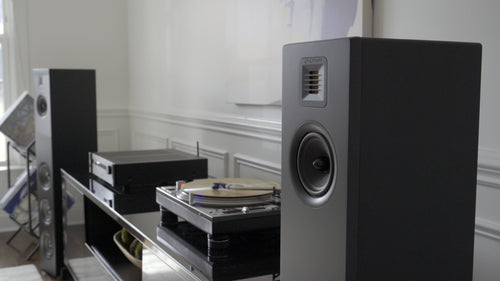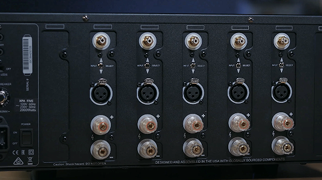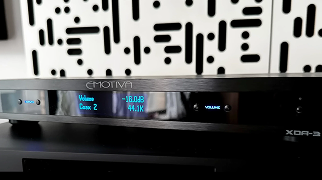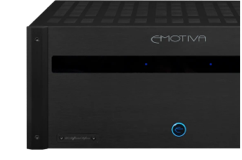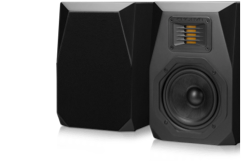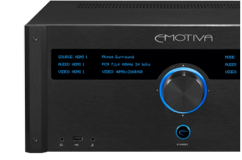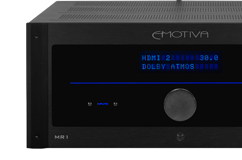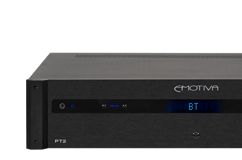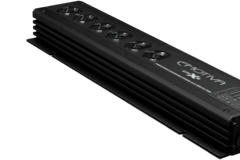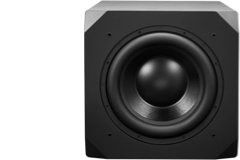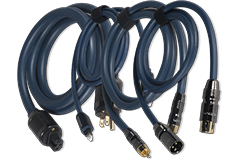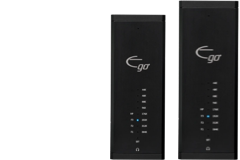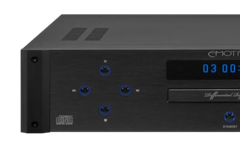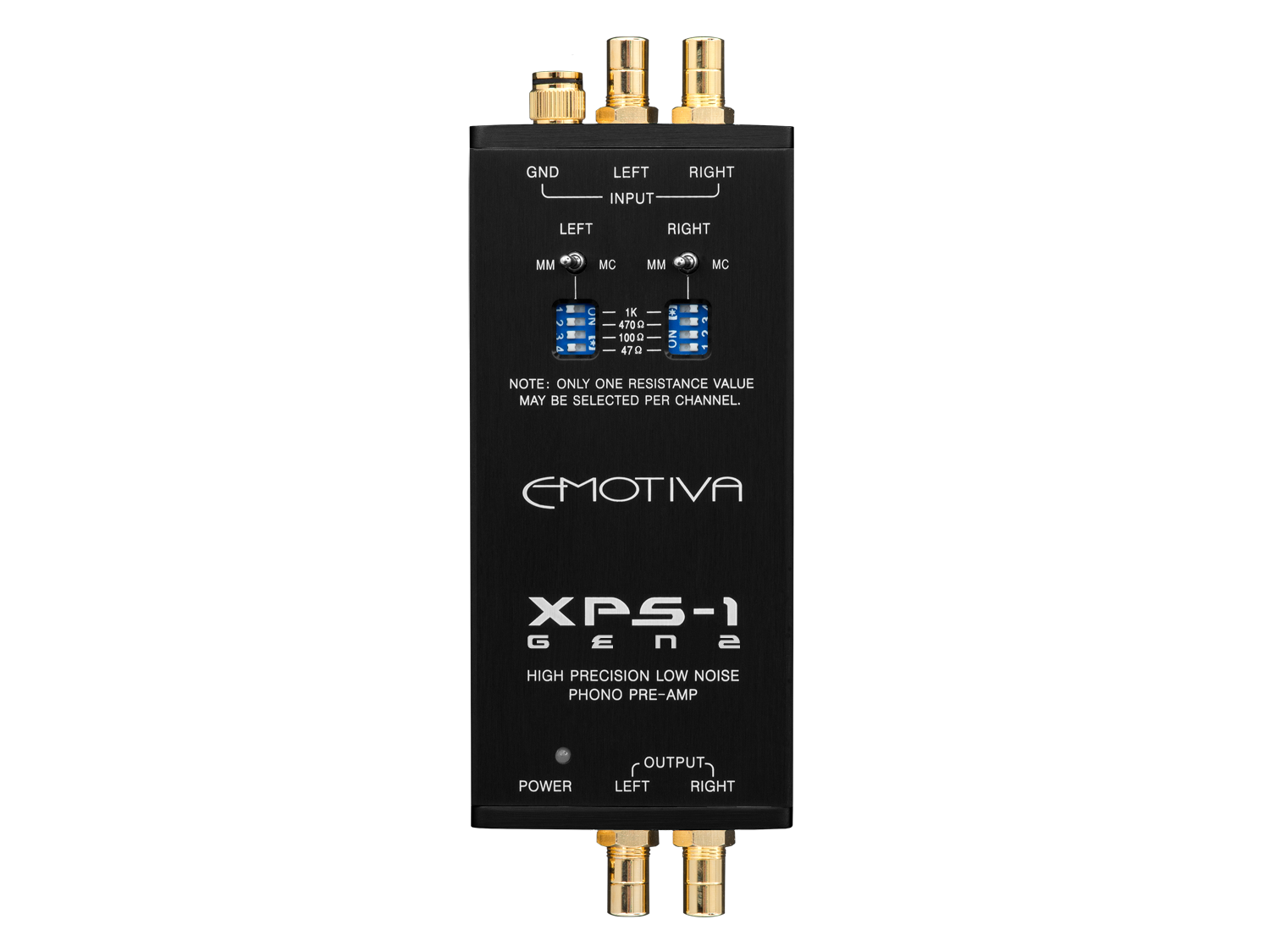A "Preamp" is short for "preamplifier." Defining the word preamplifier is difficult because the term is used in various applications. At Emotiva, we consider Preamplifiers geared more towards two-channel stereo listening than a surround sound processor or AVR for a home theater setup. However, many different preamplifiers are not necessarily designed to process a two-channel signal.
In this article, you will learn what a preamp is, what it does, and why you need one.
What is a Preamp?
A preamplifier, also known as a preamp, is an electronic amplifier that converts a weak electrical signal into an output signal strong enough to be noise-tolerant and sufficient for further processing or send to a power amplifier and a loudspeaker, i.e., your audio gear's "standard" operating level.

What isn’t a Preamp?
Integrated Amplifiers, Receivers (AVR), Amplifiers, and Processors are not strictly preamps!
An integrated amplifier will have all of the same functionality as a preamplifier. However, an Integrated amplifier has an amplifier within the unit in addition to a preamp. Like a Reciever (AVR), an integrated amplifier can simultaneously process a signal and drive a pair of speakers. However, unlike an AVR, a preamp typically does not have the latest surround sound formatting and is generally restricted to two channels.
An Amplifier typically refers to a power amplifier whose only function is to drive speakers. An amplifier turns low voltage signals from your source equipment into a signal with enough voltage gain and current to be used to drive a pair of speakers. These units typically do not have any input switching, volume control, or the ability to process a signal.
A Processor (similar to an AVR) is geared more towards surround sound, home theater listening and usually comes with the latest sound decoding capabilities. They do not feature any internal amplifiers and would need to be paired with an external amplifier to power speakers.
Preamp vs. Power Amp: What’s the Difference?
A preamplifier typically offers, at minimum, volume controls, and input switching but may also provide tone controls or other filters. A preamp boosts a weaker signal, bringing it to line level, and a power amp boosts the line level signal before it goes to the speakers.
In other words, a preamp increases signal strength to an acceptable level to transmit to the next piece of equipment in your chain, usually a power amplifier. By boosting the line-level signal, a power amp increases the amplitude/volume of the sound you hear through your speakers and provides enough voltage and current to drive them.
How Do I Choose the Preamp?
When looking for a preamp, you will see considerably useless information that truthfully doesn't mean much to you or the engineers. When you find yourself looking at these specks, wondering what they all mean; here are some things to look for:
- Type - You don't want to get a phono preamp for a two-channel stereo amplifier. You need to understand the differences and get the proper preamp for your setup!
- The number of channels — How many channels do you want to process? Be sure to get as many as you need!
- Compatibility - Do you need a fully balanced unit? Do you need a unit for two-channel stereo listening, or do you need a surround sound unit? Do you need a preamp for your turntable?
- Matching gain/output voltage - Innately, too much or too little of anything can present a problem; check the gain of your preamp and output voltage of your amplifier to ensure they somewhat match!

Types of Preamps
Focusing on the two main types of preamps, when we group these preamps by their aesthetics, Some preamps are designed to reproduce the sound and do it as cleanly as possible without altering the tone or timbre of the process. Whereas, Some preamps are designed to add a specific color to the signal.
Grouping preamps by their circuit designs, there are tube and solid-state preamps. Tube preamps are usually made of thermotic tubes, or the "valves," to create gain. Tube preamps are the type of preamp that will add significant coloration to your signal with deep bass and open, relaxed highs. Whereas Solid-state preamps provide more transparency than tube preamps due to their ability to accept higher gain levels without producing distortion.
A solid-state amplifier uses transistor circuits to convert an electrical signal into an audio wave. In solid-state preamps, the transistors operate more consistently when gain increases, producing minimal distortion up to their maximum level.
Preamps for Instruments
Specific instruments will either have a built-in preamplifier or use a separate preamp to boost their overall or specific frequency levels. Some acoustic instruments like guitars, violins, mandolins, or double bass will use a small device that “picks up” the pressure waves from the instrument. This signal that the pickup receives is very, very low, so a preamp has to be used to boost this signal up to a usable level.
Preamps for Mics
Just as there are preamps used to increase the signal level of specific instruments, microphones will function in a similar way where the input signal needs to be boosted by a preamp to get it to a usable strength for either recording or use in sound reinforcement (public events/live sound for concerts). Some types like condenser or tube mics also require external power to function, which a microphone preamp can provide.
Phono Preamps
A phono preamp is designed to be used specifically with a turntable. When a turntable’s needle picks up a signal from a vinyl record, the level of this signal is extremely low…much lower than other sources like a CD player or a music streamer.
A phono preamp significantly boosts the signal to get it up to a similar level as these other sources. Because it is such a significant increase in the signal level, the phono amp must have a very clean, quiet circuit to ensure you don’t get any extra noise in your music. Also, because audio is cut into the grooves of a vinyl record, lower frequencies have to be reduced in level, and high frequencies are boosted when music is pressed to vinyl.
The other thing that a phono preamp will do is apply a boost to low frequencies and cut to high frequencies, which will restore the music pressed to the record to its proper balance.
Often, an audio preamp will have an input labeled “phono” that has a phono preamp integrated into it. Still, you can also use a standalone phono preamp into a regular analog input on an audio preamp.

Improve Your Sound With Emotiva
Don't get me wrong; Integrated amps are a solid choice when looking for a cost-effective way to power your speakers. However, here at Emotiva, we prefer separate components over integrated preamps. We believe that; different parts can output a cleaner, more nuanced sound. If you need help selecting the proper preamp for your home audio setup, give your Emotiva Audio Sales Representative a call at 1-615-790-6754 or use our automated woofer chat on our website!
Before you go, visit the Emotiva preamplifiers to view the excellent preamps we have available now!
Share Post


